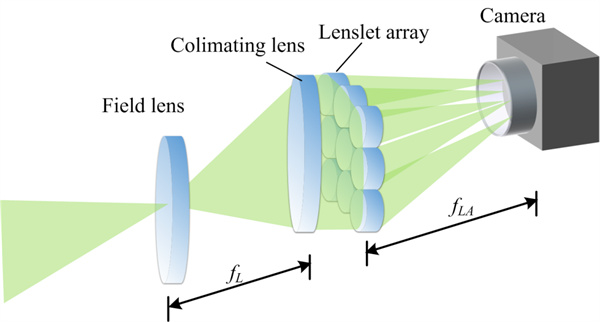Wavefront sensing is one of the core technologies of adaptive optics. For the purpose of high-resolution imaging, wavefront aberration of the incoming beam needs to be measured precisely and in real-time, and then the wavefront aberration needs to be corrected in real-time.
In adaptive optics, the widely used wavefront sensors, such as the Shack-Hartmann wavefront sensor (SHWFS), the curvature sensor, the shearing interferometer, are mainly used in the case of wavefront sensing from point sources. However, as point sources cannot be found in the observation of extended sources, wavefront sensing has to rely on artificial ones, for instance, the laser guide stars in night astronomical imaging, the fluorescent beads implanted into samples in biological microscopy, and the narrow laser beam focused on the retina in retinal imaging.
Currently, some methods have been developed for wavefront sensing from extended objects, but these methods have some problems to some extent. For example, phase retrieval and phase diversity approaches, retrieving the wavefront by iterative algorithms, can work for extended objects, but they are time-consuming and have the stagnation problem. The scene-based SHWFS, sensing wavefront from extended objects by cross-correlation algorithms, is mainly used in solar adaptive optics. So far, there is no general solution for the problem of wavefront sensing from extended objects.
The team of Prof. Sijiong Zhang, from Nanjing Institute of Astronomical Optics Technology (NIAOT), National Astronomical Observatories (NAOC), Chinese Academy of Sciences (CAS), has been working in the field of wavefront sensing for many years. A variety of wavefront sensing approaches have been developed by them. Recently, this team has made new progresses in wavefront sensing from extended objects.
A new type of wavefront sensor, namely the general extended-object wavefront sensor (GEWFS), has been proposed. The GEWFS can sense the wavefront aberration from any types of extended objects and will broaden the fields of application of adaptive optics. This work was published in the Optical Engineering journal (Vol. 60, issue 7, PP. 073107, 2021) and a national invention patent has been applied for it.

Fig. 1 Configuration of the GEWFS.
As introduced by associate professor Changwei Li, the first author of this paper, the GEWFS has special structure and reconstruction algorithm, which work together to achieve the task of wavefront sensing from extended objects. As shown in Fig. 1, the filed lens, employed in the GEWFS, guarantees that each lenslet collects the same information of the extended object, which is the foundation of the subsequent wavefront reconstruction.
To eliminate the influence of extended object on wavefront sensing, a reconstruction algorithm based on elimination of the Fourier spatial spectrum of the extended object was designed. Subimage arrays of different sources for the SHWFS and the GEWFS are shown in Fig. 2, and all subimage arrays are captured under the same wavefront aberration which was introduced by a piece of spherical aberration compensation plate.
Zernike coefficients of the reconstructed wavefronts from aforementioned subimage arrays are shown in Fig.3. It can be concluded that the wavefront reconstructed by the GEWFS from extended objects are in agreement with that reconstructed by SHWFS from point source.
Fig. 2 Subimage arrays of different sources for the SHWFS (a) and the GEWFS (b, c, d).
Fig. 3 Zernike coefficients of the reconstructed wavefronts from the SHWFS (P) and the GEWFS (E1, E2, and E3).
At present, this team is working on promoting the GEWFS, expanding its application in the fields of solar adaptive optics and laser beam shaping, and industrializing it.
This work was supported by the grants of the National Natural Science Foundation of China (Grant Nos. 11873069 and 11703060), and the Operation, Maintenance, and Upgrading Fund for Astronomical Telescopes and Facility Instruments, budgeted from the Ministry of Finance of China (MOF), and administrated by the Chinese Academy of Sciences (CAS).